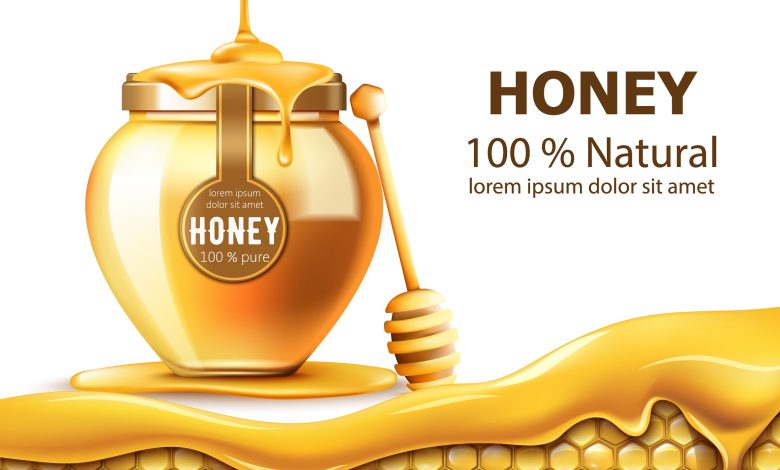Difference Between Fake or Organic Honey and Benefits of Pure Honey?

Honey is a sweet, sticky liquid produced by bees. Bees collect nectar from various flowers. The collected nectar is consumed, digested and then released into the hive. The result is organic honey. The aroma, taste and colour of honey depend on the flowers from which the bees collect nectar. The honey is analyzed to determine its quality and authenticity.
Did you know that there is a difference between organic honey and adulterated honey? Fake or adulterated honey is in no way good for you. Sometimes it can even be dangerous.
What are the benefits of organic honey?
Organic honey contains a variety of antioxidants that prevent cell damage and strengthen the immune system.
- It also kills a variety of unwanted bacteria and moulds. So, It is a natural antiseptic that can be used for wounds and bacterial and fungal infections.
- It promotes tissue regeneration and accelerates the healing process.
- Organic honey has anti-cancer properties. So, It reduces the risk of cancer.
- It nourishes the good bacteria present in the stomach and intestines.
- It is effective against stomach ulcers and diarrhoea.
- Honey can treat sore throats. So, It can cure colds and soothe coughs.
- It helps reduce blood pressure and triglyceride levels.
- It is good for heart health.
How is honey adulterated?
- Did you know that it takes 24 bees to produce one tablespoon of honey? Honey is in high demand because of its excellent health benefits. Because the demand is not met, sellers adulterate honey.
- Honey is the third most adulterated food in the world. Honey is contaminated in many ways.
- Various products such as molasses, dextrose, glucose and corn syrup are added to honey to increase its volume.
- Adulteration of organic honey with synthetic honey (based on vegetable sugars) has become one of the most common ways of contaminating honey.
- Cheap or artificial sweeteners are added to honey.
- There are also artificial honeys made from additives such as corn syrup, sugar and coloring agents.
- Pollutants in the air, water and soil are transferred to honey by the bees.
- Honey can also contain traces of pesticides, insecticides and other chemicals. Bees can also introduce chemicals such as lead and potassium into honey.
- When honey is processed in large quantities, natural nutrients are destroyed. Honey can become contaminated with a variety of chemicals and microorganisms during processing.
Consequences of consuming adulterated or fake honey
- Consumption of adulterated honey can lead to obesity and increased blood sugar levels.
- Adulterated honey can be toxic. This can lead to food poisoning.
- Signs of food poisoning include nausea, diarrhea, vomiting and fever.
- Honey has antibacterial and antifungal properties, but it can be grown under certain favorable conditions. A variety of bacteria, yeasts and molds are present in honey. Microorganisms can be generated by bees, air movement, dust or artificial treatments.
- Harvesting honey before it is ripe can be dangerous because of the increased water content.
- Fake honey may contain high levels of sugar, which can lead to diabetes and increased cholesterol.
- Prolonged consumption of counterfeit or adulterated honey can lead to heart disease.
- Fake honey is subject to fermentation and spoilage.
How can you tell the difference between organic and adulterated honey?
Fake honey and organic honey are, in many cases, almost identical. It is impossible to distinguish them by appearance alone. However, in some cases, fake honey may have an unusual appearance. Here are some of the signs of fake honey
- Unlike organic honey, it has a natural stickiness.
- Fake honey will be very light and watery.
- It may be tasteless or sour.
- It dissolves quickly when dissolved in water.
- So, It does not caramelize quickly when heated.
These are some simple ways to identify fake honey by its physical properties. Often, honey is fake or adulterated but does not show these signs. In these cases, honeycomb analysis gives accurate results.
Conclusion
Honey is analyzed to determine its quality. We use various techniques such as physical and chemical analysis, microscopy, chromatography and spectroscopy to determine the presence of impurities in the honey. The origin and age of the honey can be determined by various procedures.
Author
Ardella M Baez is well-experienced organic honey with a firm grip on the food industry. She had graduated from the University of London with an excellent academic record.




